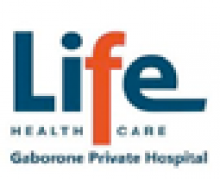When stopping to assist at the scene of an accident, park in a safe position that does not add to an already dangerous situation.
Summary
When stopping to assist at the scene of an accident, park in a safe position that does not add to an already dangerous situation. Call emergency services. Secure the scene by placing warning triangles and getting volunteers to signal to traffic to slow down. Assist the injured - but only if you can do so without endangering yourself.
What to carry in your car
- A first aid kit, and the knowledge to use it effectively i.e. do a first aid course.
- A fire extinguisher.
- A reflective safety jacket or vest, to slip on over your clothes.
- Traffic warning triangles.
- A torch.
If you come across an accident while driving, or are involved in one yourself, the following steps will help you take care of injured persons safely and effectively:
Pull over and stop
Keep in mind that further accidents are often caused because oncoming cars crash into vehicles obstructing the road after an accident. You want to warn other road users of the accident scene, without adding to the danger with your vehicle. So park in a safe position on the road verge, and some way back from the accident if possible. This is particularly important if the accident is over a rise or on a bend, so oncoming vehicles get due warning of the accident scene up ahead. Turn on your headlights and hazard lights. (Use of brights at night may dazzle oncoming drivers.) Put on your reflective jacket/vest if you have one.
Call emergency services
The emergency call centre will likely ask you about the location of the accident, and other relevant information e.g. numbers of people injured.
Secure the scene
Put out warning triangles if you have them - well in advance of the accident site, giving drivers plenty of time to slow down.
If possible, get two responsible volunteers to stand about 100m either side of the incident to signal to traffic to slow down. They should ideally be wearing or waving something bright during the day, and something reflective or light-coloured at night. At night, they should also preferably have torches.
Assist the injured
- Remember that you can only help others if you are safe yourself: don't put yourself in any position where you might also sustain an injury.
- Take out your first aid kit if you carry one in your car and put on the disposable gloves this should contain.
- Reassure the people who have been involved in the accident: tell them you've called emergency services and, if you are a trained first aider, tell them so.
- Don't move an injured person unless there is an immediate threat to life (e.g. the vehicle is on fire and you are can't extinguish it). There may be an underlying spinal injury and movement could cause paralysis or death.
- If the person is unconscious, open the mouth and check for objects obstructing the airway.
- If the person is breathing, leave them in the position you find them and monitor them regularly.
- If the person is not breathing, begin CPR.
- If a person is bleeding heavily from a wound, place any available cloth material - e.g. a bandage or an item of clothing - over the wound and apply firm pressure until the emergency services arrive.
- Monitor any injured person for signs of shock.









